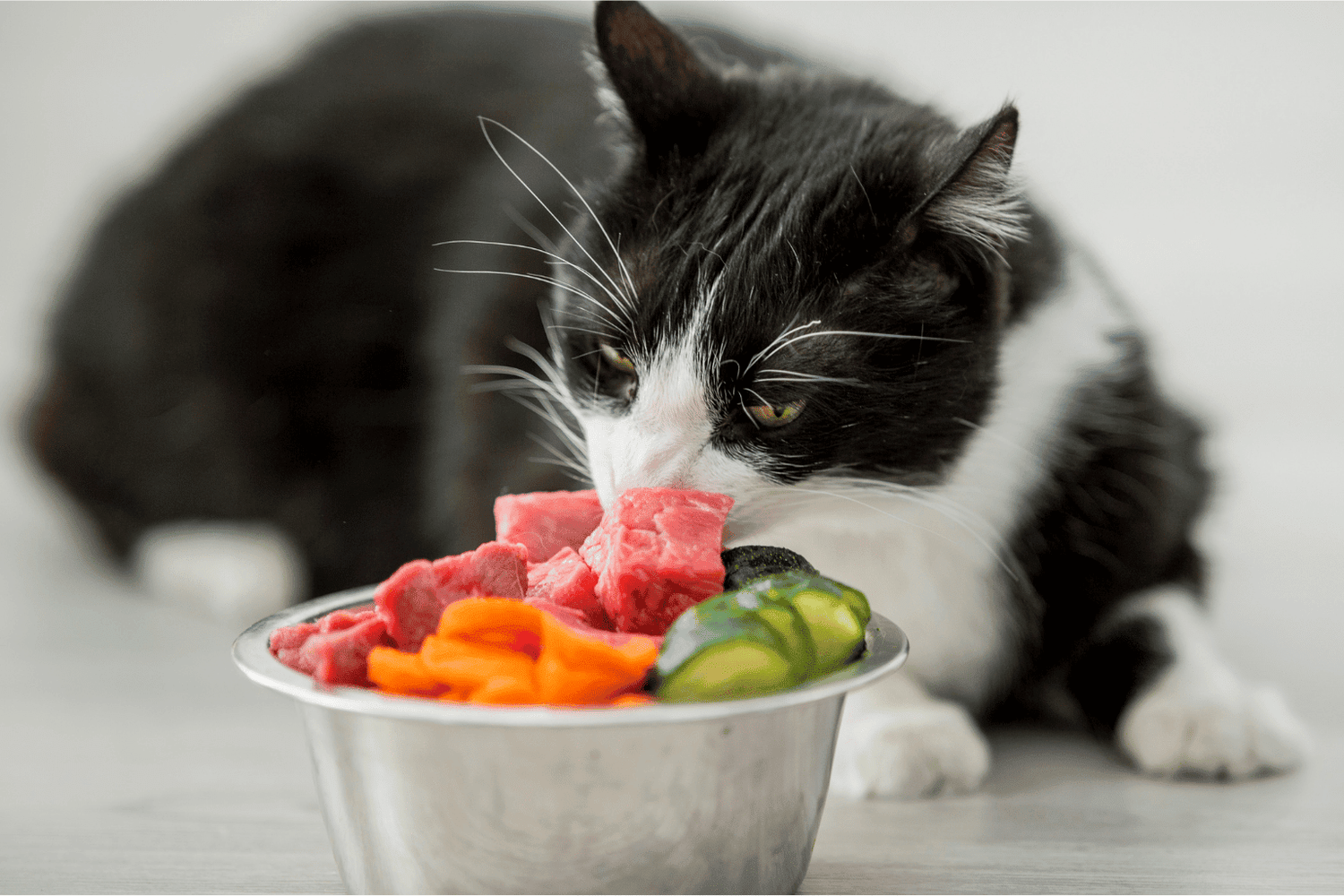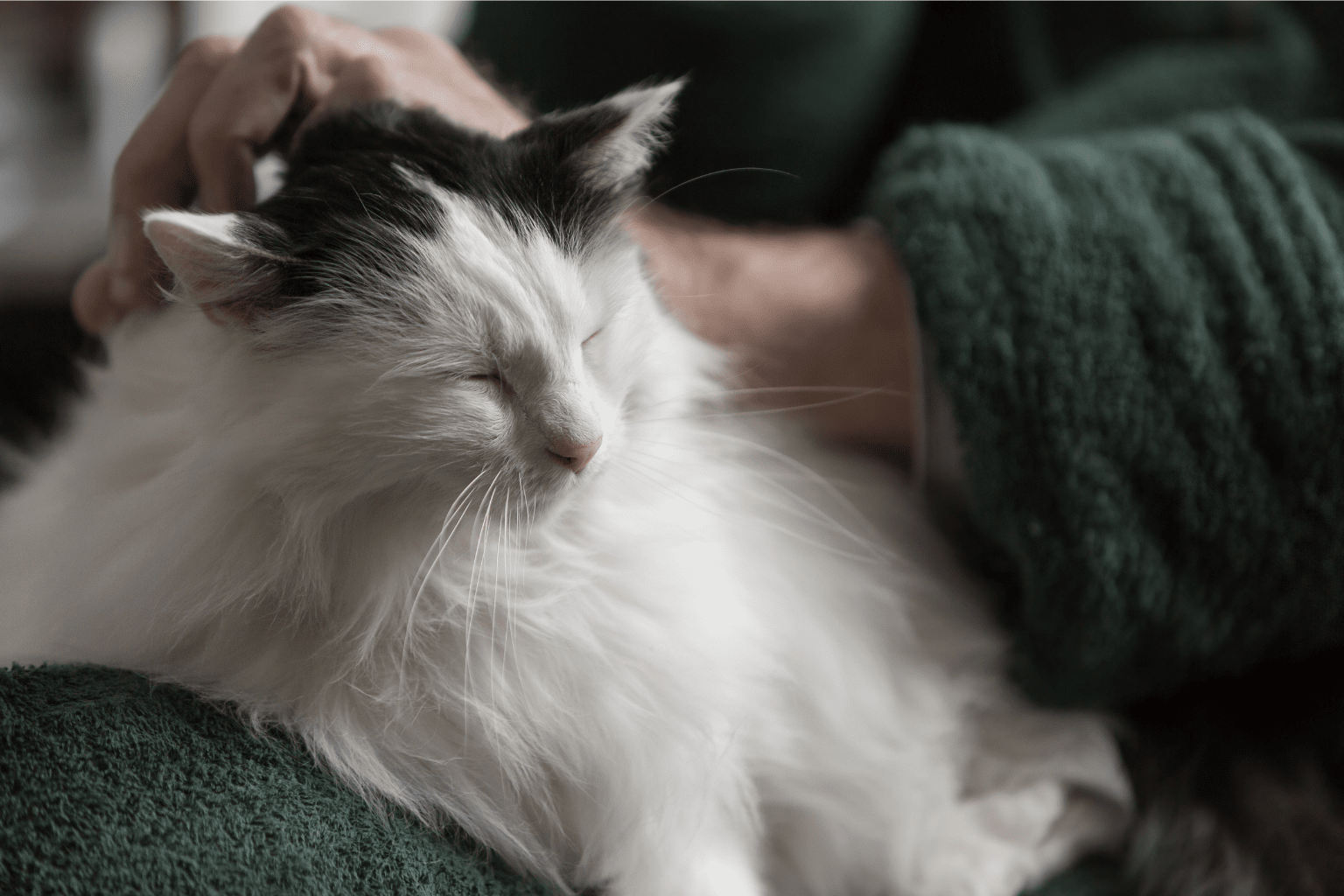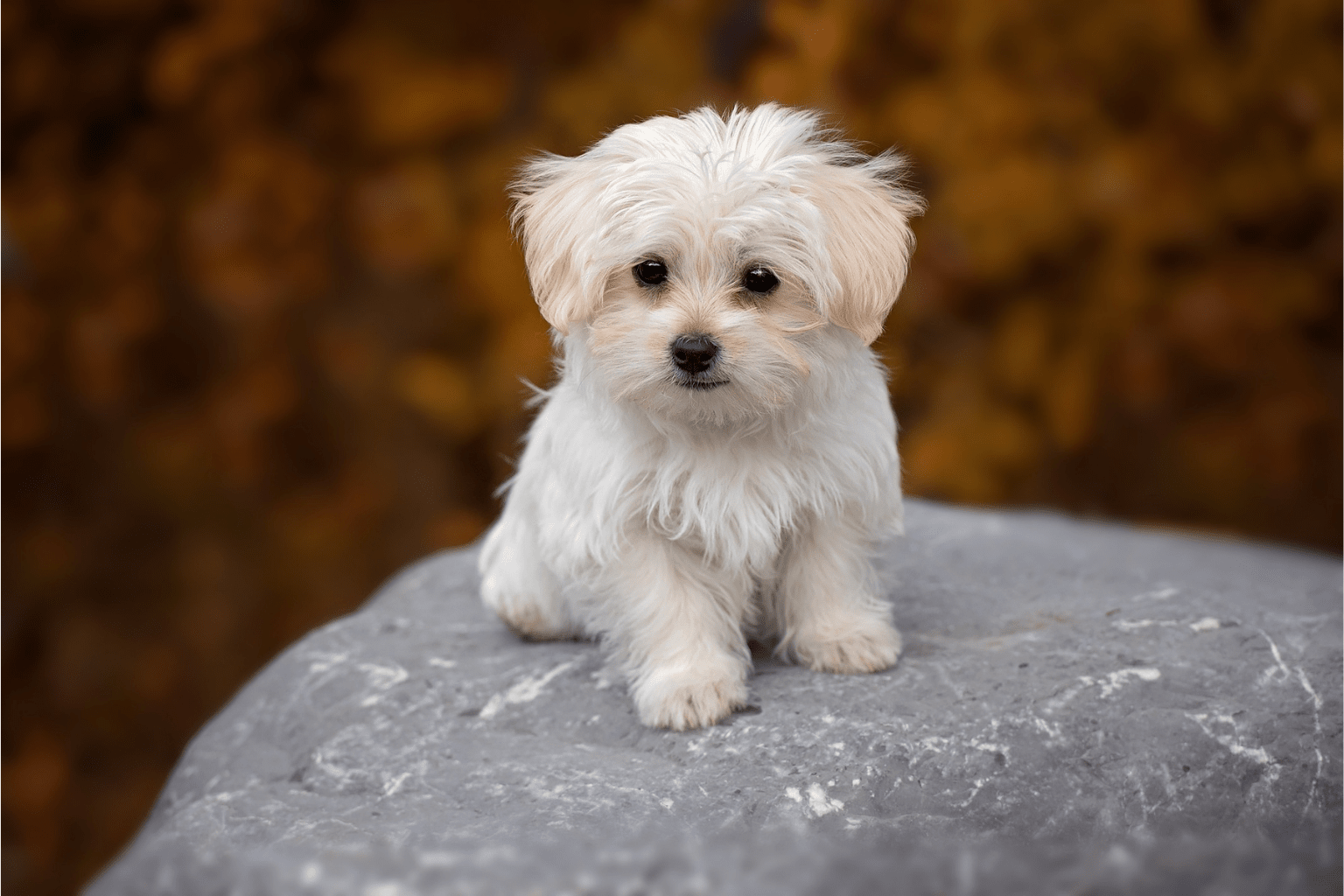Key Takeaways
- Kidney disease impairs a cat's ability to filter waste and regulate fluids.
- Approximately one in three cats over 12 years old experiences kidney issues.
- Kidney disease is a common health concern among senior cats.
Table of Contents
- What Does Kidney Disease Mean for Our Cats?
- The Science of Kidney-Safe Nutrition
- Choosing Commercial Kidney Foods
- Wet vs. Dry Food for Kidney Health
- Natural & Homemade Approaches
- Transitioning Your Cat to a Kidney-Friendly Diet
- Solving Mealtime Challenges
- Hydration, Your Cat's Lifeline During Kidney Disease
- Comparing Renal Diet Options
- Wet vs. Dry Food for Kidney Health, The Ultimate Hydration Debate
- Natural & Homemade Approaches, Nourishing Cats with Kidney Troubles
- Transitioning Your Cat to a Kidney-Friendly Diet, Smoother Changes for Sensitive Eaters
What Does Kidney Disease Mean for Our Cats?
When our cats develop kidney disease, their bodies struggle to filter waste and maintain proper fluid balance. About 1 in 3 cats over age 12 develops some degree of kidney trouble, making it one of the most common health challenges for senior felines.
For pet parents seeking additional support, natural cat supplements for treating common health issues in cats and kittens can be a helpful addition to your cat's care routine.
Top 5 Early Signs of Kidney Problems in Cats:
- Increased drinking and urination
- Weight loss despite normal appetite
- More frequent litter box visits
- Decreased energy or playfulness
- Poor coat quality or excessive grooming
The kidneys do far more than produce urine, they regulate blood pressure, maintain electrolyte balance, and support red blood cell production. When kidney function declines, choosing the right foods for cats with kidney problems becomes essential for supporting your cat's comfort and quality of life.
To learn more about proactive steps, check out these 7 tips for preventing kidney disease in cats.
The Science of Kidney-Safe Nutrition

Kidney-friendly nutrition focuses on reducing the workload on damaged kidneys while maintaining proper nutrition. The key shifts include lowering phosphorus (typically under 0.3% dry matter), moderating protein quality, and dramatically increasing moisture content.
If your cat has additional health concerns, such as digestive issues, consider exploring a cat digestive health bundle to support overall wellness alongside kidney care.
| Nutrient | Regular Adult Cat Food | Kidney Support Formula | Why It Matters |
|---|---|---|---|
| Phosphorus | 0.8-1.2% | Under 0.3% | Excess phosphorus strains failing kidneys |
| Protein | 35-45% | 28-35% | High-quality, moderate amounts reduce waste |
| Moisture | 10-12% (dry) | 75-85% (wet) | Supports hydration and waste elimination |
| Sodium | 0.3-0.7% | Under 0.3% | Helps manage blood pressure |
These modifications help sick kidneys work more efficiently while ensuring your cat receives complete nutrition. The goal isn't restriction for its own sake, but strategic support for your cat's changing needs.
Choosing Commercial Kidney Foods
When selecting commercial food for cats with kidney issues, start by examining the guaranteed analysis on the label. Look for phosphorus below 0.4%, moderate protein levels, and added moisture content.
For cats with multiple health needs, cat health product bundles can provide comprehensive support in addition to dietary changes.
Prescription vs. Over-the-Counter Options
Prescription kidney diets undergo rigorous testing and typically offer the most precise nutrient profiles. These formulas often contain phosphorus levels as low as 0.2% and include added potassium and omega-3 fatty acids. Over-the-counter "kidney support" foods provide gentler modifications, making them suitable for early-stage kidney disease or cats transitioning to therapeutic nutrition.
Work closely with your veterinarian to determine which approach suits your cat's specific stage of kidney disease. Some cats thrive on prescription formulas immediately, while others need gradual transitions through less restrictive options first.
Label Reading Checklist:
- Phosphorus content under 0.4%
- High moisture content (wet preferred)
- Named protein sources (chicken, fish)
- Added omega-3 fatty acids
- No artificial preservatives
Wet vs. Dry Food for Kidney Health
For cats with kidney problems, wet food offers significant advantages over dry kibble. The moisture content alone, averaging 70-80% compared to dry food's 10%, provides crucial hydration support that failing kidneys desperately need.
Wet food also tends to be more palatable for cats experiencing decreased appetite, a common symptom of kidney disease. The enhanced aroma and texture often encourage eating when cats become finicky about their meals.
If your cat strongly prefers dry food, gradually add warm water or low-sodium broth to increase moisture content. Aim for an additional 2-3 ounces of fluid intake daily, especially for cats with advanced kidney disease. This simple change can significantly support kidney function and overall comfort.
Natural & Homemade Approaches

Many cat parents explore homemade options when commercial diets don't suit their cats' preferences or specific needs. While homemade kidney food for cats can be beneficial, it requires careful planning to ensure nutritional completeness.
If you're curious about which human foods are safe or unsafe for your cat, see this helpful guide on the best and worst human foods for cats.
Basic Homemade Kidney Support Meal
A simple kidney-friendly meal might include cooked chicken breast (small portions), white rice for easy digestion, and a small amount of cooked vegetables like carrots. Always cook proteins thoroughly and avoid bones, which can splinter and cause harm.
Important: Homemade diets require veterinary guidance and often need supplements to prevent nutritional deficiencies. Work with a veterinary nutritionist to ensure your homemade meals provide complete, balanced nutrition for your cat's specific kidney health needs.
When combined with thoughtful nutrition, BestLife4Pets Cat UTI, Kidney & Bladder Support can help maintain your cat's comfort naturally. These gentle pellets support the body's own healing processes, working alongside any dietary changes you make.
For cats with additional joint concerns, you may also want to explore cat arthritis & joint pain relief remedies to support mobility and overall well-being.
Transitioning Your Cat to a Kidney-Friendly Diet
Most cats resist sudden food changes, especially when they're already feeling unwell. The key to success lies in patience and gradual introduction over 7-10 days.
Start with a 25/75 mix, 25% new kidney-friendly food with 75% current food for the first three days. Then shift to 50/50 for days four through six, followed by 75% new food for the final stretch. This gentle approach helps your cat's digestive system adjust while reducing the chance of food refusal.
For picky eaters, try warming wet food slightly to enhance aroma, or add a small amount of low-sodium chicken broth. Some cats respond well to feeding smaller, more frequent meals throughout the day rather than two large portions.
Bailey's Success Story: Golden-Years Gary noticed his senior tabby Bailey initially turned away from prescription kidney food. By mixing it with warm water and offering it in Bailey's favorite shallow bowl, acceptance improved within a week. Bailey now eagerly anticipates mealtime again.
Solving Mealtime Challenges
Kidney disease often affects appetite and taste preferences, making mealtime feel like a daily struggle. Understanding why cats refuse their new diet helps you find solutions that work.
Common refusal triggers include unfamiliar textures, reduced sodium making food taste bland, or nausea from kidney dysfunction. Combat these issues by offering food at room temperature or slightly warmed, rotating between different approved flavors, and keeping meals small but frequent.
When traditional approaches fail, natural support can make the difference. BestLife4Pets Cat UTI, Kidney & Bladder Support helps maintain your cat's overall comfort, which often translates to improved appetite and better mealtime cooperation.
Expert Tip: Try offering meals after short, gentle play sessions. Light activity can stimulate appetite in cats who've been feeling sluggish due to kidney issues.
Hydration, Your Cat's Lifeline During Kidney Disease

Compromised kidneys struggle to concentrate urine effectively, leading to increased water loss and potential dehydration. This makes adequate fluid intake absolutely critical for cats with kidney problems.
Practical hydration strategies include providing multiple fresh water sources throughout your home, using ceramic or stainless steel bowls (which many cats prefer over plastic), and considering a cat water fountain to encourage drinking through movement and sound.
Some cats benefit from flavored water options like diluted, low-sodium chicken broth or bone broth made specifically for pets. Always ensure these additions don't contain onion, garlic, or excessive sodium.
In advanced cases, your veterinarian might recommend subcutaneous fluid therapy, a gentle procedure that provides direct hydration support. This isn't as intimidating as it sounds and many cat parents successfully learn to administer these fluids at home.
For more in-depth information on feline kidney disease, see this FDA resource on kidney disease in cats and dogs.
Comparing Renal Diet Options
Different stages of kidney disease require different nutritional approaches. Early-stage cats often tolerate slightly higher protein levels, while advanced cases need stricter phosphorus restriction.
Prescription renal diets offer precise nutrient control with phosphorus typically below 0.3% and moderate protein reduction. These require veterinary approval but provide the most targeted nutritional support.
Over-the-counter kidney support foods provide gentler modifications, making them suitable for early-stage disease or cats transitioning to stricter diets. Look for foods specifically labeled for kidney or senior support.
Wet vs. Dry Food for Kidney Health, The Ultimate Hydration Debate
When it comes to foods for cats with kidney problems, the wet versus dry debate isn't just about preference, it's about survival. Your cat's compromised kidneys struggle to concentrate urine effectively, making every drop of moisture count toward their comfort and longevity.
| Food Type | Moisture Content | Kidney Benefits | Practical Considerations |
|---|---|---|---|
| Wet Food | 70-80% | Reduces kidney workload, flushes toxins naturally | Higher cost, shorter shelf life once opened |
| Dry Food | 8-12% | Convenient for medication mixing, longer storage | Requires significant water supplementation |
| Enhanced Dry | 15-20% (with added water/broth) | Compromise solution for budget-conscious families | Requires daily preparation, texture changes |
The hydration math is straightforward: A 10-pound cat needs roughly 7-9 ounces of total fluid daily. Wet food provides 2-3 ounces per serving, while dry food contributes almost nothing. For cats with kidney disease, aim for an additional 2-3 ounces beyond normal requirements.
Real-World Hydration Boost: Warm wet food to room temperature and add a tablespoon of low-sodium chicken broth. This simple trick can increase daily fluid intake by 20-30% while making meals more appealing to finicky eaters.
Natural & Homemade Approaches, Nourishing Cats with Kidney Troubles

Many families explore homemade options when commercial kidney diets fall short of their cat's preferences or budget constraints. While homemade food for cats with kidney disease requires careful planning, it offers unmatched customization for your cat's specific needs and stage of disease.
Basic kidney-friendly meal foundation:
- Protein source: Cooked chicken breast, low-mercury fish, or eggs (1-2 ounces per meal)
- Carbohydrate base: Cooked white rice or sweet potato (1 tablespoon)
- Healthy fats: Small amount of fish oil or olive oil
- Hydration boost: Prepare with extra water or low-sodium broth
What to absolutely avoid: High-phosphorus ingredients like organ meats, dairy products, and most commercial treats. Never add salt, garlic, or onions, which can further stress compromised kidneys.
Feline Fiona discovered this approach when her 14-year-old tabby, Whiskers, refused every commercial kidney diet. Working with her holistic vet, she created simple meals using poached chicken and rice, supplemented with our Cat UTI, Kidney & Bladder Support pellets. Within two weeks, Whiskers was eating eagerly and showing improved energy levels.
Our gentle homeopathic pellets support the body's natural healing processes alongside any dietary approach, whether commercial, homemade, or a combination of both.
For additional insights on nutrition and weight management for cats, refer to these AAHA nutrition and weight management guidelines.
Transitioning Your Cat to a Kidney-Friendly Diet, Smoother Changes for Sensitive Eaters
Even the most nutritionally perfect diet for cats with kidney disease won't help if your cat won't eat it. Successful transitions require patience, strategy, and understanding that sick cats often have heightened food sensitivities.
The 7-10 day gradual transition method:
- Days 1-3: Mix 25% new food with 75% current food
- Days 4-6: Increase to 50/50 ratio, monitoring appetite closely
- Days 7-9: Shift to 75% new food, 25% familiar food
- Day 10+: Complete transition if cat is eating well
Appetite-boosting strategies that work:
- Warm food to body temperature to enhance aroma
- Offer meals after short, gentle play sessions
- Try different textures, pâté, chunks in gravy, or shredded varieties
- Feed smaller, more frequent meals to prevent overwhelm
Bailey's Success Story: Golden-Years Gary's 12-year-old tabby initially refused kidney support food completely. By warming each meal and adding a sprinkle of freeze-dried chicken, Bailey began eating within three days. The key was making mealtime appealing rather than stressful.
For pet owners looking for a comprehensive approach, dog and cat supplement bundles can help support your pet's overall health during dietary transitions.
Frequently Asked Questions
What are the key nutritional changes needed in foods for cats with kidney problems?
Foods for cats with kidney problems typically have lower phosphorus and moderate, high-quality protein to reduce kidney workload. Increased moisture content is also important to help maintain hydration and support kidney function.
How do wet and dry foods compare in supporting hydration for cats with kidney disease?
Wet foods naturally contain more moisture, making them better at supporting hydration for cats with kidney disease. Dry foods have less water, so they may require additional fluid intake to help maintain proper hydration.
What are the early signs of kidney problems in cats that pet owners should watch for?
Early signs include increased drinking and urination, weight loss despite a normal appetite, more frequent litter box visits, decreased energy or playfulness, and changes in coat quality or grooming habits.
Should I choose prescription kidney diets or over-the-counter options for my cat with kidney disease?
Prescription kidney diets are formulated to meet specific nutritional needs for kidney support, but some over-the-counter options can also help maintain kidney health. It's best to discuss your cat's individual needs with your veterinarian to find the right approach.



